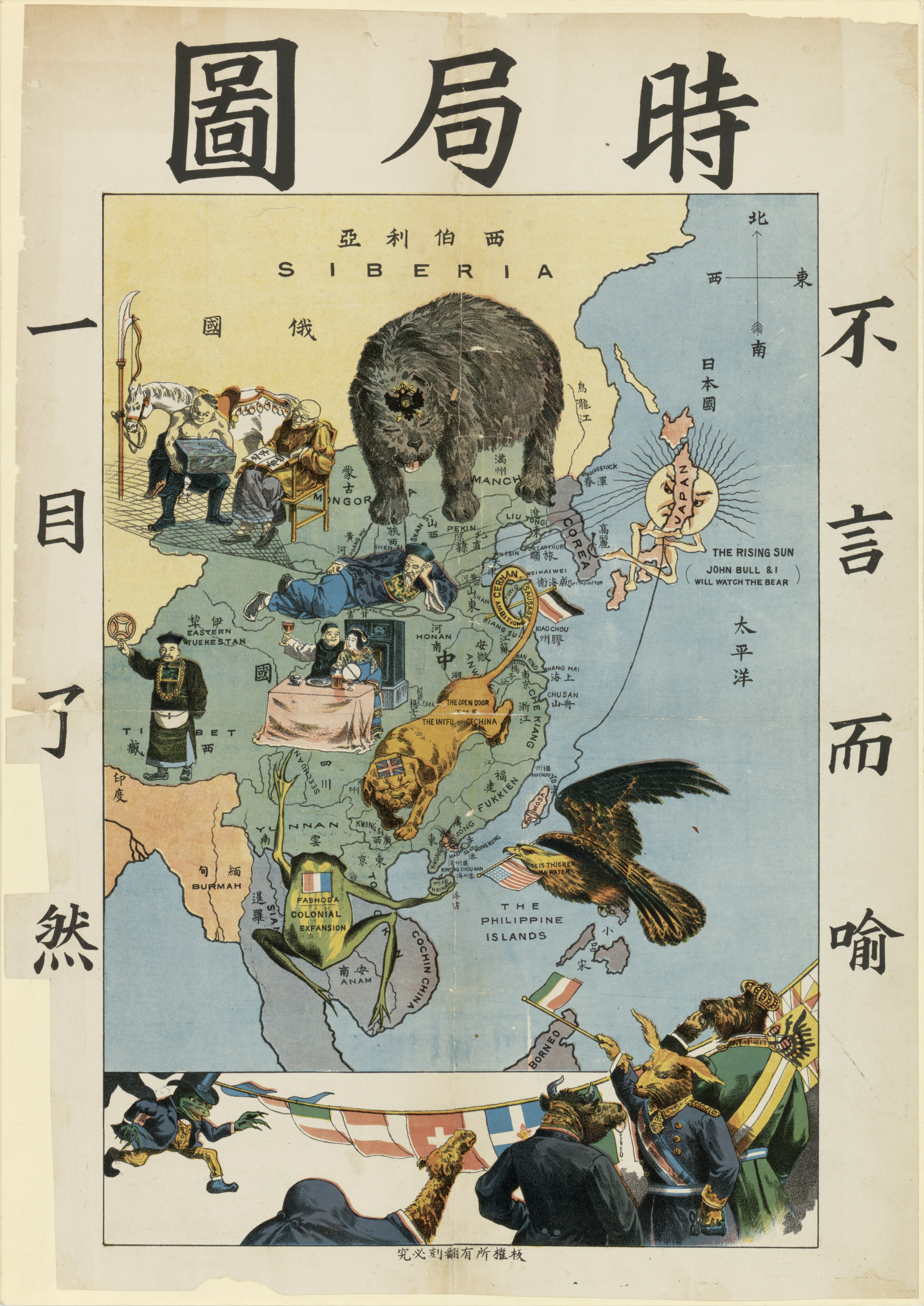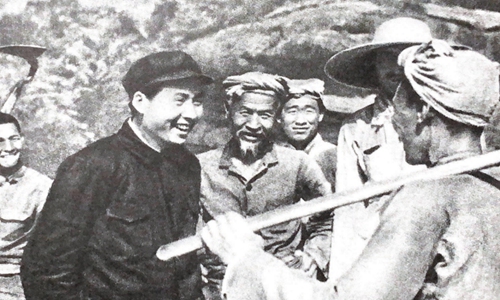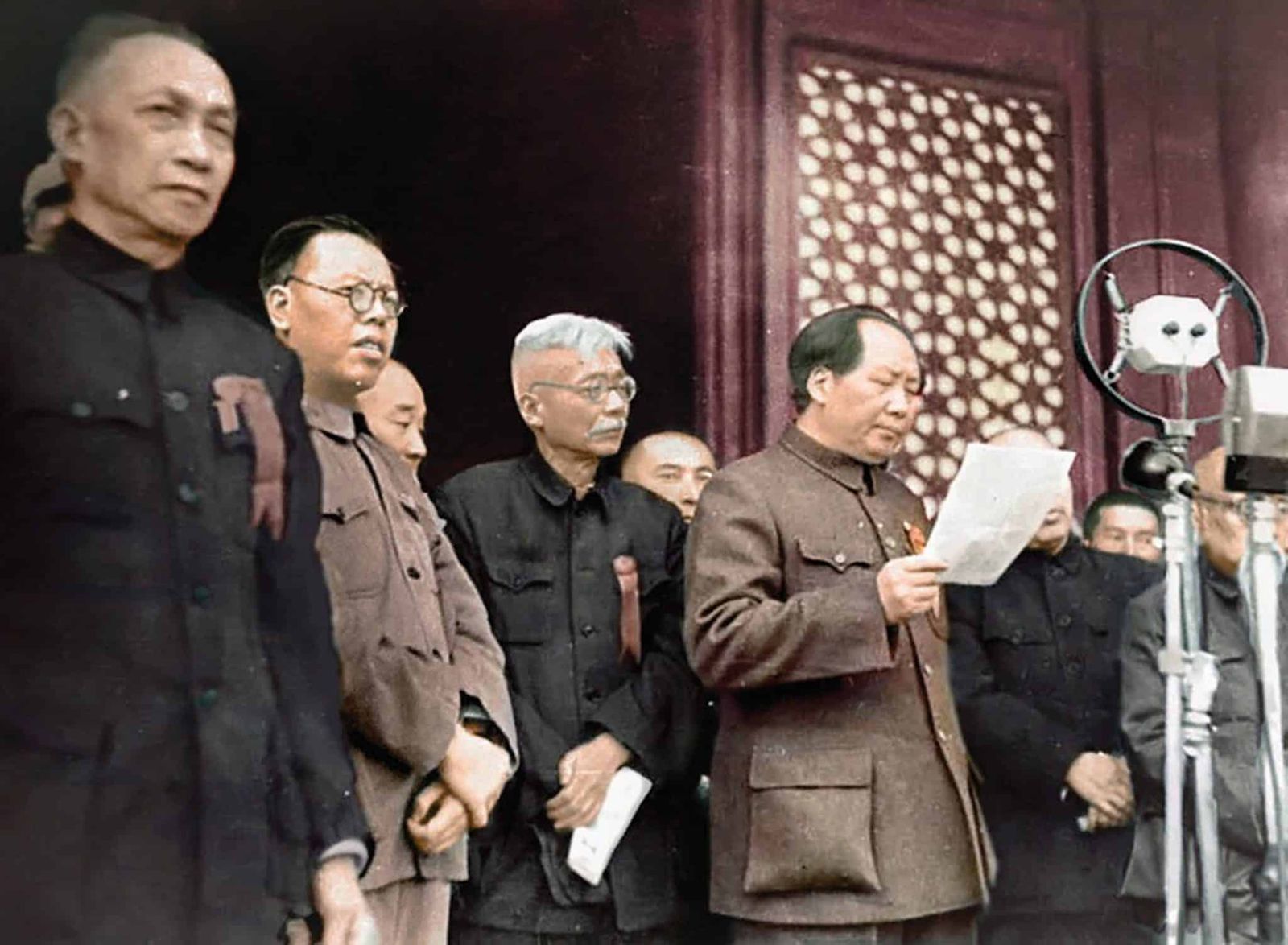Editor's note: This is a four-episode series that dives into the four time periods that were turning points in China's modern history: the New Democratic Revolution from 1919 to 1949; the Socialist Revolution in the 1950s; the Reform and Opening-Up since 1978, and the New Era of socialism with Chinese characteristics post 2012. The first episode focuses on the New Democratic Revolution, from which national independence and the people's liberation were achieved. You may find the second, third, and fourth episode here.
The year was 1911. Military uprisings broke out across China with a common goal of overthrowing the Qing Dynasty. Mao Zedong, at 18 years old, was a private soldier in the revolutionary army. He spent most of his monthly pay on newspapers, from which he first learned of "socialism." The young man from central China's Hunan Province did not know that after another 38 years, he would be standing atop the Tiananmen gate to announce the founding of a new republic, putting an end to China's Century of Humiliation.
Like other passionate Chinese youths at the time, Mao was enraged by decades of foreign oppression and wanted to save his crumbling motherland. Since 1840, the once glorious Chinese empire had suffered humiliation after humiliation, starting with a lopsided defeat in the First Opium War. Realizing China's weakness, foreign powers began to invade China one after another. The rich but vulnerable country was like a big alluring cake, and every strong power in the world wanted a piece of it.

"The Situation in the Far East," by author Tse Tsan-tai, depicted the Western powers encroaching on China at the end of the 19th century in symbolic form. The bear represents Russia, the dog Britain, the frog France, the eagle the United States, the sun Japan, and the sausage Germany.
"The Situation in the Far East," by author Tse Tsan-tai, depicted the Western powers encroaching on China at the end of the 19th century in symbolic form. The bear represents Russia, the dog Britain, the frog France, the eagle the United States, the sun Japan, and the sausage Germany.
Facing a national crisis, the Chinese tried to find a way out through reforms, but the results had been disappointing. The Self-Strengthening Movement, the Qing government's attempt to Westernize, drew an abrupt end with a shocking defeat to Japan in the First Sino-Japanese War. The Hundred Days' Reform, aimed at making progressive institutional changes, was nipped in the bud by the conservatives led by Empress Dowager Cixi.
Even the 1911 Revolution, though it ended the absolute monarchy that had ruled China for thousands of years, did not change China's fate for the better. China was still carved up into a "semi-colonial, semi-feudal" state, and the sudden absence of an authority led to the rise of provincial warlords, which spurned the country into bigger chaos.
Mao thought that the key to a complete reform was to unite the common people, which the previous revolutions had all failed to do. He called for unions of workers, farmers, students, teachers, policemen, rickshaw pullers and other walks of life. The many small unions could band together and form a great union. He believed that the combined power of the masses is the most powerful force in the world, and will determine the outcome of all revolutions. This idea became the rudiment of the United Front, which was the Chinese Communist Party's key to success.
"For common interests are limited to a small part of the people, so it is small unions that are set up. The interests of many small unions have points in common, so it is possible to set up big unions. For example, the pursuit of learning is the particular concern of us students, so we set up our unions for the pursuit of learning. Such things, on the other hand, as the pursuit of liberation and freedom are the concern of everyone, whoever he may be, and therefore people of every kind must be brought together to form a great union," Mao wrote in his article, "The Great Union of the Popular Masses."
Fast forward to 1940, the resistance war against Japanese invasion was in a stalemate. Mao, now the leader of the Communist Party, was writing in his base in northwest China's Yan'an. Among multiple works he authored was "On New Democracy," which set the course for China's future.
Mao argued that the democracy in China will go its own path, distinct from any other country. He called it a "new" democracy to differ from the old democratic revolutions led by the bourgeoisie in Europe and America in the 17th and 18th centuries. In contrast, the Chinese revolution, Mao wrote, will be led by the proletarians. According to Mao, 80 percent of the Chinese population were peasants, thus the Chinese revolution should essentially be a peasant revolution.
"The proletariat, the peasantry, the intelligentsia and the other sections of the petty bourgeoisie undoubtedly constitute the basic forces determining China's fate. These classes, some already awakened and others in the process of awakening, will necessarily become the basic components of the state and governmental structure in the democratic republic of China, with the proletariat as the leading force," Mao stated in "On New Democracy."

Farmers chat with Mao Zedong, leader of the Communist Party of China (CPC), in Yan'an, a CPC-led revolutionary base at the time, northwestern Shaanxi Province.
Farmers chat with Mao Zedong, leader of the Communist Party of China (CPC), in Yan'an, a CPC-led revolutionary base at the time, northwestern Shaanxi Province.
Mao came up with a unique strategy to "encircle the cities from rural areas." Notable revolutions such as the French revolution and the October Revolution in Russia all started in major cities, but Mao had his aim on China's rural villages, where the "three great mountains" that weighed on the Chinese people – imperialism, feudalism and crony capitalism – had the weakest influence.
By establishing revolutionary bases in rural areas, the Communist Party developed their forces by liberating and recruiting the local peasants and workers. The liberated peasants voluntarily joined the army to fight for a common cause. As a result, the revolutionary army expanded rapidly. When the War of Resistance against Japanese Aggression broke out in 1937, the combined forces of the Communist Party totaled roughly 55,300. When Japan surrendered in 1945, that number grew to 1.3 million. By the end of 1949, the People's Liberation Army had 5.5 million troops. With the Communist Party's victory in the War of Liberation and the founding of the People's Republic of China, the "three mountains" were finally overthrown.
On September 21, 1949, Mao gave a speech at the First Plenary Session of the Chinese People's Political Consultative Conference, titled "The Chinese People Have Stood Up."
"From now on our nation will belong to the community of the peace-loving and freedom-loving nations of the world and work courageously and industriously to foster its own civilization and well-being and at the same time to promote world peace and freedom. Ours will no longer be a nation subject to insult and humiliation. We have stood up."

Chairman Mao Zedong proclaims the founding of the People's Republic of China, in Beijing, China, October 1, 1949.
Chairman Mao Zedong proclaims the founding of the People's Republic of China, in Beijing, China, October 1, 1949.

